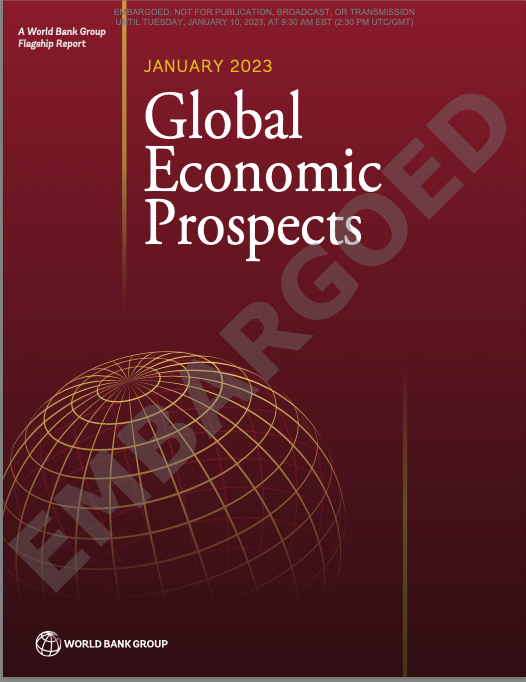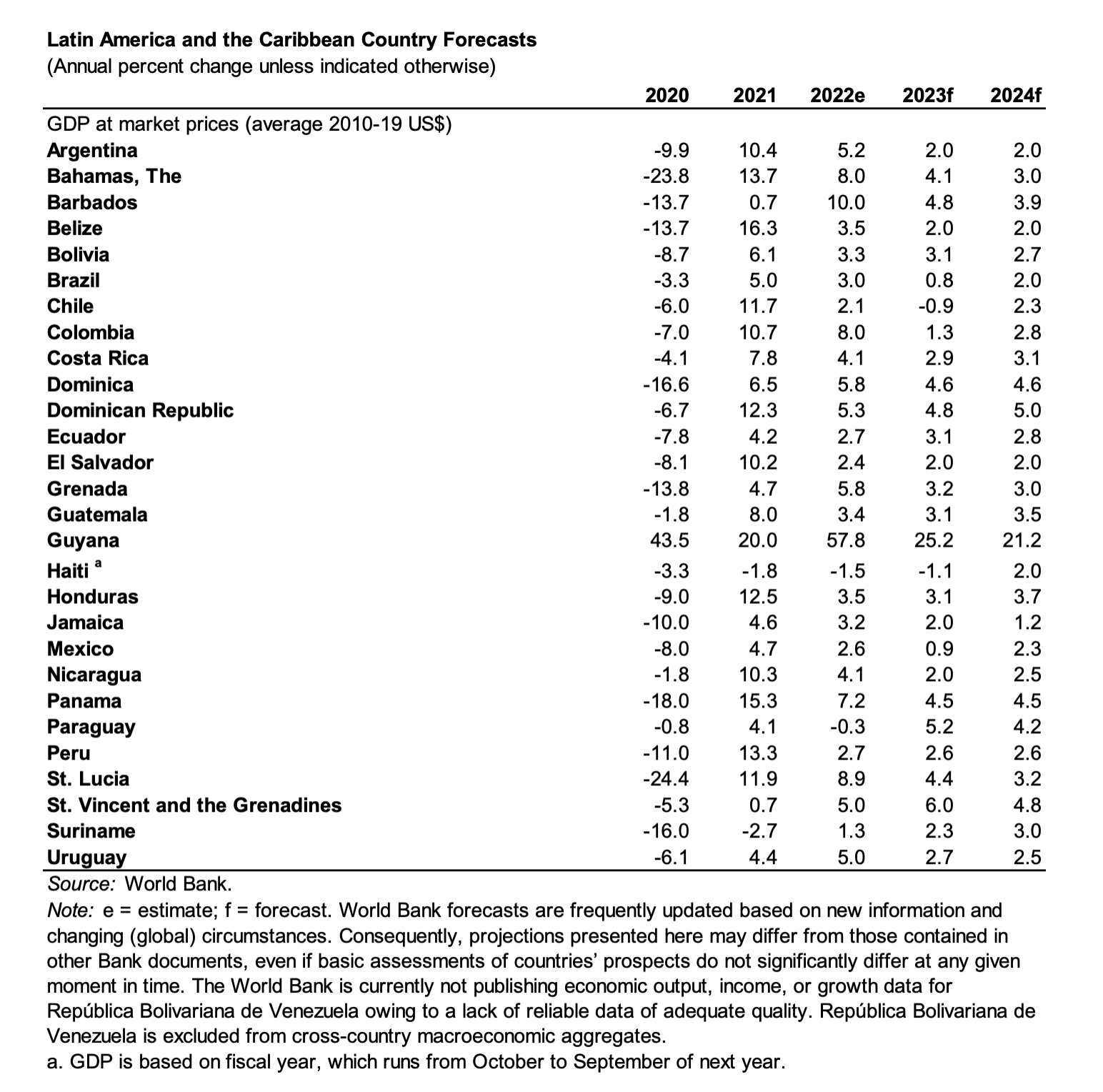Final GEP23 Regional Highlights LAC
Global Economic Prospects – Latin America and the Caribbean

Recent developments: Latin America and the Caribbean (LAC) is estimated to have grown 3.6 percent in 2022. Robust expansion in the first half of the year was driven mostly by consumption, supported by recovering labor markets. However, activity weakened late last year as slowing global growth and tighter financial conditions started to take effect.
Inflation surged in 2022, reaching multi-decade highs in many countries, with price pressures broadening to a wide array of goods and services. Food prices rose particularly rapidly. Headline inflation appeared to peak in the middle of the year in most countries, but it remains well above central bank targets. Accordingly, central banks continued raising policy rates last year, into double digits in the region’s largest economies.
Outlook: Growth in LAC is expected to decelerate sharply, to 1.3 percent in 2023, before recovering somewhat to 2.4 percent in 2024. The slowdown reflects efforts by monetary authorities to tame inflation, and spillovers from a weak global outlook. Sluggish growth in the United States and China is expected to curtail export demand, while rising U.S. interest rates are likely to keep financial conditions restrictive. Slow global growth is expected to weigh on commodity prices, weakening South America’s terms of trade. Regional investment is expected to decline this year, dampened by higher financing costs, soft business confidence and elevated policy uncertainty.
Brazil is projected to grow 0.8 percent in 2023, as high interest rates curb investment and export growth slows. Mexico’s economy is expected to expand 0.9 percent this year, as restrictive monetary conditions, stubbornly high inflation, and softer exports curtail activity. GDP in Argentina is forecast to grow 2 percent in 2023, as very high inflation stymies economic activity.
After surging last year, growth in Colombia is also set to slow markedly, to 1.3 percent this year. Chile’s economy is likely to contract over the year, as lower real incomes erode consumption. In Peru, elevated policy uncertainty and declining metal prices are expected to dampen growth, forecast at 2.6 percent in 2023.
Growth in Central America is forecast to soften to 3.2 percent in 2023, as deceleration in the U.S. economy hampers exports and inward remittances. The Caribbean is expected to see firmer expansion, at 5.6 percent, but this partly reflects a long-delayed recovery from the pandemic-induced recession.
Risks: Risks to the outlook are skewed to the downside. Weaker-than-anticipated global growth could weigh heavily on commodity prices, undermining economic activity in the region’s commodity exporters. Further tightening of global financial conditions could also lead to financial stress in the region’s more vulnerable economies.
Domestic inflation in LAC could prove more persistent than anticipated, risking a move up in long-term inflation expectations. Bringing inflation durably under control could then require additional large interest rate increases. While potentially necessary, this could further suppress near-term growth. More broadly, the baseline forecast indicates stagnating living standards in the first half of the 2020s, with average per capita GDP growth of 0.6 percent per year over 2020-24. This could make it harder to combat a wide range of social issues, worsening barriers to sustained, inclusive development in LAC.
Download Global Economic Prospects http://wrld.bg/WNfs50MhGZt







